Car accidents can disrupt lives in ways that are both immediate and far-reaching. Whether you have experienced a minor fender-bender or been involved in a major car accident, the aftermath can be confusing and stressful. From dealing with medical bills and repair costs to navigating complex insurance claims and understanding your legal rights, the road to recovery involves many crucial steps.
In this post, we will explore the legal options available to you, including pursuing a personal injury lawsuit. Our goal is to provide you with the knowledge you need to make informed decisions and to help you seek the fair compensation you deserve.
Car accidents vary greatly in terms of their severity, causes, and legal complexities. Each type of accident presents unique challenges and considerations, affecting the legal process and potential outcomes for those involved.
Understanding these differences is crucial for navigating the aftermath of an accident and securing appropriate compensation.
Rear-end traffic accidents occur when one vehicle strikes another from behind. This type of accident is one of the most common types of accidents. According to a report by the National Safety Council, there were 3,680,000 rear-end collisions in the United States in 2022.
Such accidents often result from factors such as distracted driving, sudden stops, or tailgating. The rear vehicle usually has the responsibility to maintain a safe distance and be prepared to stop, making these accidents often straightforward in terms of assigning fault. Determining fault involves clearly proving that the rear driver was following too closely or failed to maintain proper control of his or her vehicle.
Despite the seemingly clear-cut nature of rear-end crashes, complexities can arise. For example, if the lead vehicle was stopped suddenly without reason, there might be arguments about shared fault.
Additionally, the extent of injuries and damages can vary, complicating the claim. Therefore, deciding between an insurance claim and a personal injury lawsuit for a rear-end accident is not always an easy choice.
The advantages of an insurance claim for a car accident are:
On the other hand, some might choose to pursue a lawsuit for the following reasons:
A T-bone accident, also known as a side-impact accident, occurs when one vehicle crashes into the side of another, forming a "T" shape. These accidents typically happen at intersections, where one vehicle may run a red light or fail to yield the right-of-way. Due to the lack of side protection in many vehicles, T-bone accidents can result in severe injuries.
Determining fault in T-bone accidents often revolves around which driver had the right-of-way and whether any traffic signals or signs were ignored. Evidence such as traffic camera footage, witness statements, and police reports are crucial in establishing fault. The injured party needs to prove that the other driver's failure to comply with traffic laws directly resulted in the accident and their injuries.
The severity of T-bone accidents can lead to complicated injury claims when multiple vehicles or parties are involved. Additionally, in cases where both parties have conflicting accounts or the accident occurred in a high-traffic area, gathering clear evidence becomes crucial.
Reasons to consider pursuing a car accident lawsuit are:
Still, some might consider an insurance claim for the following reasons:
Multi-vehicle crashes, often referred to as chain-reaction accidents, are among the most complex types of car accidents due to the complexity of determining liability.
In multi-vehicle crashes, involving more than two cars, each involved vehicle typically has its own insurance policy. Coordinating claims and negotiations can be cumbersome, and the damages and injuries may be extensive and varied.
Handling claims through multiple insurance policies can streamline the process, especially if liability is clearly distributed among the parties. Insurers often have procedures in place for coordinating coverage, which can help expedite the resolution of claims and ensure that victims receive the compensation they need.
On the other hand, multi-vehicle crashes often involve multiple drivers and varying degrees of fault. Determining liability can be challenging, as it requires a thorough investigation into each party's actions and contributions to the accident.
When insurance claims fail to resolve disputes or clarify fault, a lawsuit can address these issues through the legal process. This ensures that all responsible parties are identified and held accountable, leading to a more equitable outcome for the victim.
Fender-benders, often referred to as minor collisions or low-impact accidents, typically involve minimal damage to vehicles and usually occur at low speeds.
While such accidents might seem inconsequential, the reasons behind these accidents and the decision to pursue an insurance claim or lawsuit can still have significant implications.
Common causes of fender-benders are:
If the damages from a fender-bender are relatively minor and the costs of repairs fall within your insurance policy's coverage limits, filing an insurance claim can be an appropriate course of action.
Additionally, when injuries are minor or not apparent, an insurance claim can address the costs associated with vehicle repairs and any minor medical expenses. This approach provides a quick resolution without the need for extensive legal action.
Some reasons to consider a personal injury lawsuit are:
Hit-and-run accidents occur when the at-fault driver flees the scene of the accident. When this happens, victims can file a claim with their own insurance company under uninsured motorist coverage if the responsible party cannot be located. Still, it’s hard to secure enough compensation if their insurance coverage is inadequate.
If the hit-and-run driver is later identified, a personal injury lawsuit is one way to hold the driver accountable and seek compensation for additional damages.
The decisions you make in the hours and days following the car accident can significantly impact your ability to seek compensation and your overall recovery. Whether you are contemplating pursuing a personal injury lawsuit or filing an insurance claim, taking the following steps from the outset is crucial.
You should seek medical attention right away, even if you feel fine. Some injuries may not present symptoms immediately but could have serious long-term consequences.
Visiting a healthcare provider ensures that all injuries are documented and treated. This will not only protect your health but also provide crucial evidence for any future legal claims or insurance disputes.
Obtaining accurate repair estimates is a crucial step in assessing the damage to your vehicle and understanding the financial impact of the accident.
Take your vehicle to a reputable auto body shop to get written repair estimates. This will give you a clear picture of the damage and the costs involved to get your car repaired. It’s wise to get at least three estimates to compare and ensure fairness.
A police report provides an official record of the accident and can be critical in determining liability. Ensure that a report is filed with local law enforcement and obtain a copy for your records.
This accident report will include details such as the location of the accident, the parties involved, and any citations issued – all of which can be used to support your claim or lawsuit.
Obtain written estimates and keep all receipts related to any other damaged property. This information will be important for both your insurance claim and any potential lawsuit, as it helps establish the financial impact of the accident.
Whatever legal options you pursue, taking these steps and working closely with your car accident lawyer and his or her legal team can help you pursue compensation and seek the justice you deserve.
If you have been involved in a car accident, whether it's a minor fender-bender, a perplexing rear-end accident, or a major collision, navigating the aftermath can be overwhelming. Understanding your rights and options is crucial when securing the compensation you deserve.
At our Kiley Law Group, each car accident lawyer on our team is dedicated to helping accident victims like you navigate the complex legal landscape, from filing insurance claims to pursuing personal injury lawsuits.
Your well-being, financial stability, and peace of mind are too important to leave to chance. Now is the time to act and take control of your situation. Contact us today to schedule a free consultation with a car accident lawyer to discuss your case and explore your legal options. Complete our online form to get started.

